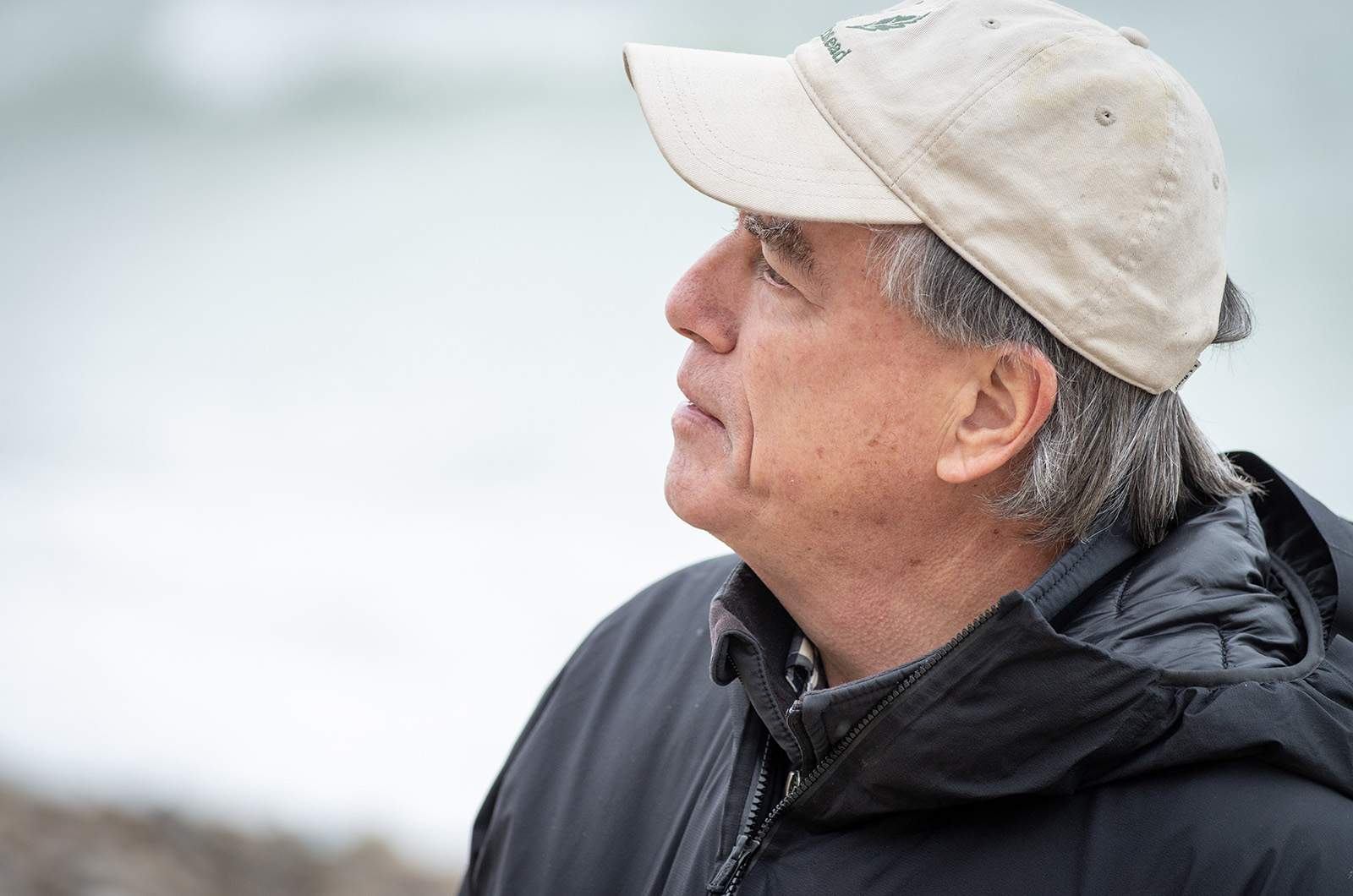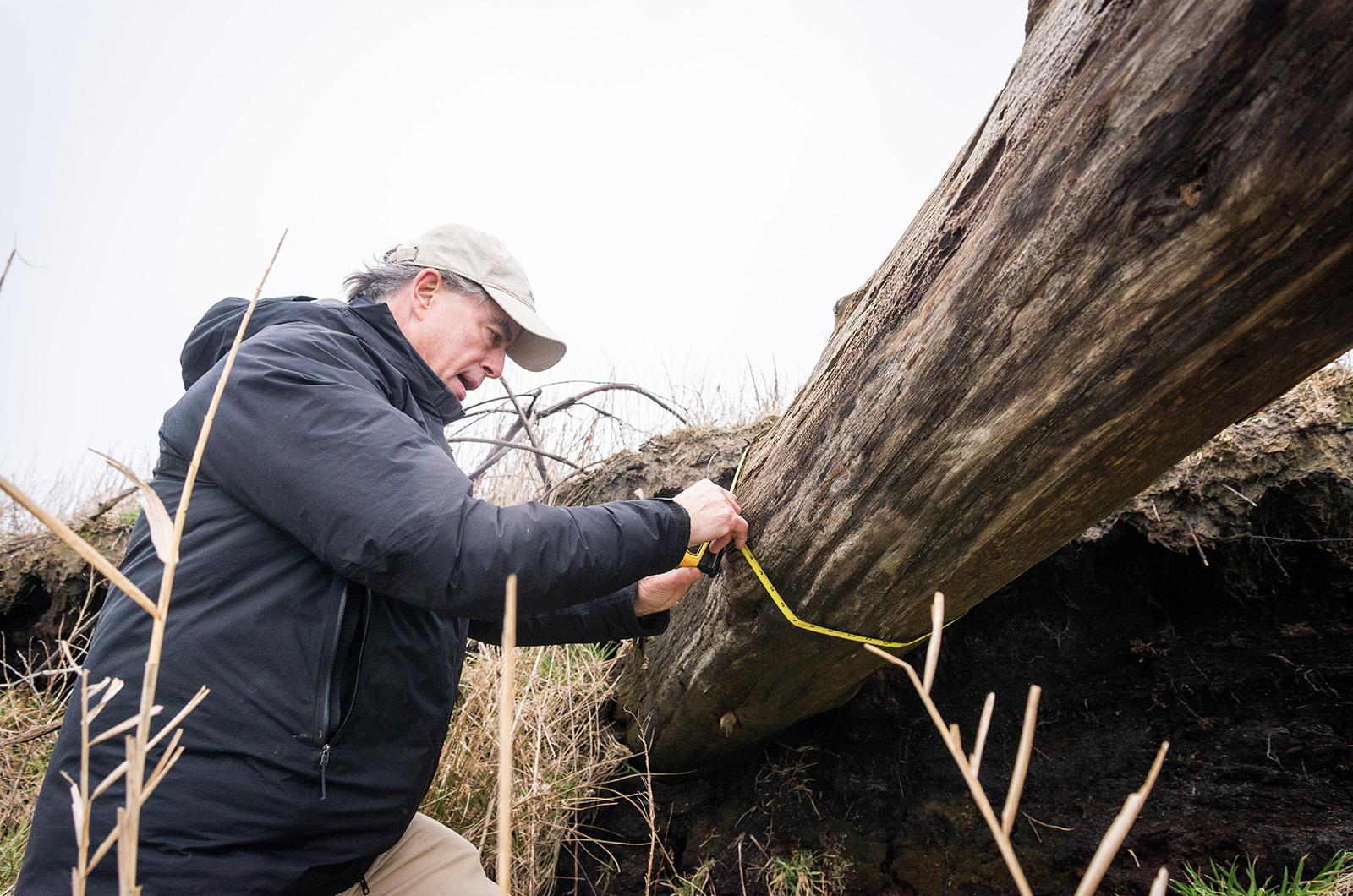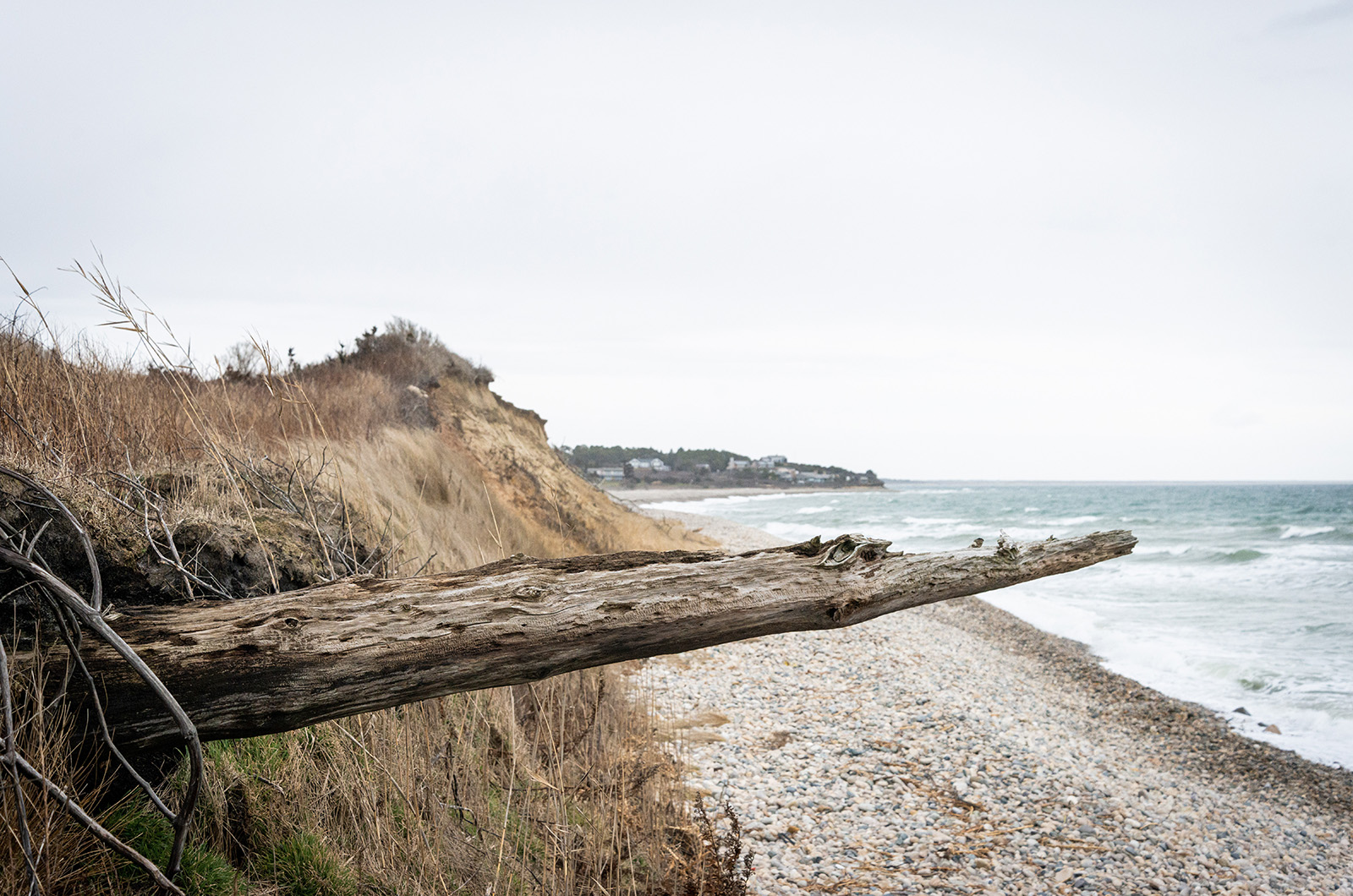Ten thousand years ago, a fierce wind struck southern Massachusetts and an old and great white pine collapsed. Down it fell with a splash, sinking into the cold wet muck at the bottom of a pond it bordered.
Today, the wind still whips at that site, on an Island severed from the mainland 5,000 years ago. Over many millennia, the fierce waters of Chilmark’s south shore have beaten the old bog and highland into Stonewall Beach, and that same white pine juts out from the beach like a lightning bolt from the past.
At least, that’s the theory.
On a recent afternoon, measuring tape in hand, David R. Foster, former director of the Harvard Forest ecological research program, eagerly shuffled up the black-earth cliff and sidled up to the base of the tree, revealed in recent years by erosion. The tree was 16 feet long, according to his measurements, and 16 inches in diameter. The distance between knots, Mr. Foster said, indicate a healthy and vigorous tree, and its wood is in remarkably good condition.
“You could take this and bring it to a sawmill and cut it up and make boards out of it,” he said, placing his hand on the trunk for stability. “These trees are so well preserved; they are completely intact...it really looks like a stand of trees blew over while they were still alive.”
It is an astounding find, a cluster of perfectly preserved white pines from the early Holocene, complete with the ancient soil in which they were buried. By studying that old wood, and the microscopic clues left in the earthy cliffs that hold it, Mr. Foster and his colleagues have been able to get a rare glimpse into Vineyard forests of yesteryear, gaining insight into the Island’s past and present. Results from their study will be released in a forthcoming article in the scientific journal Rhodora.
Mr. Foster said he found out about the ancient tree through West Tisbury resident Prudy Burt, whose nephew Caleb noticed it on a stroll down Stonewall Beach back in 2018. The site presented a unique opportunity to study how individual trees reacted to ancient environmental conditions.
Mr. Foster engaged the help of palaeoecological experts he befriended during three decades as director of the Harvard Forest ecological research program. Mr. Foster retired as director in 2020 but remains an active forest advocate and researcher.
One of his first calls was to Wyatt Oswald, an environmental scientist at Emerson University who works with Harvard Forest.
“I walked into my office one day at Harvard Forest and on my desk were these pieces of wood and a handwritten note from David, and he had put some peat in the fridge,” Mr. Oswald said.
Mr. Oswald’s role was to form a picture of the forest, and the individual organisms’ environmental context. To do this, he went to the fridge and pulled out the old dirt — or peat — that Mr. Foster had placed there.

Peat is another word for a particular kind of soil that accumulates in anaerobic (that is, oxygen-free) conditions at the bottom of ponds and wetlands. Just as those conditions are perfect for preserving a great old pine, they also preserve millions of minuscule pollen particles.
The analysis of ancient pollen particles is precisely Mr. Oswald’s specialty.
The group also consulted with paleoclimatologist Bryan Shuman, and a description unfolded of a dry, cold climate comparable to northern Minnesota populated with white pine, birch and holly. This description compared with earlier Vineyard studies, which gave researchers an opportunity to narrow their studies to more localized conditions.
“It’s pretty amazing that you can get some sense of how these trees were doing 10,000 years ago,” Mr. Oswald said.
That great jutting trunk, for example, could be identified by Professor Barry Goodell through the whorled knots particular to white pine. The distance between those whorls indicates a history of vigorous growth.
In the future, Mr. Oswald said, he hopes they can take a core sample of the tree, to learn more about its conditions via its growth rings.
“I hope it sets up other curious people who want to work on this...I think we’ve really just begun to take advantage of the huge amount of material that’s spilling out of this beach,” he said.
The research adds yet another chapter to the white pine’s complex relationship with Vineyard forests. Once common, they began to die off about 5,000 years ago as the climate warmed. In more recent years, the tree was reintroduced to the Island.
“You’ve got this interesting situation where it’s not native, but it historically was native and it grows well here . . . it was, for example, planted by the state in the State Forest. Big mistake,” Mr. Foster said.
Now, white pine threatens to take over delicate native scrub-oak landscapes, he said.
“The big lesson from studying the past is, yes, change is constant, but the change we are generating these days is at such an extraordinary pace relative to the past,” he said.
The contrast between past and present, Mr. Foster continued, is striking, a major reason the ancient landscapes of Martha’s Vineyard remain his muse.
“I get inspired by the land, and by the fact that there are people out there who are so passionate about it,” he said.








Comments (4)
Comments
Comment policy »